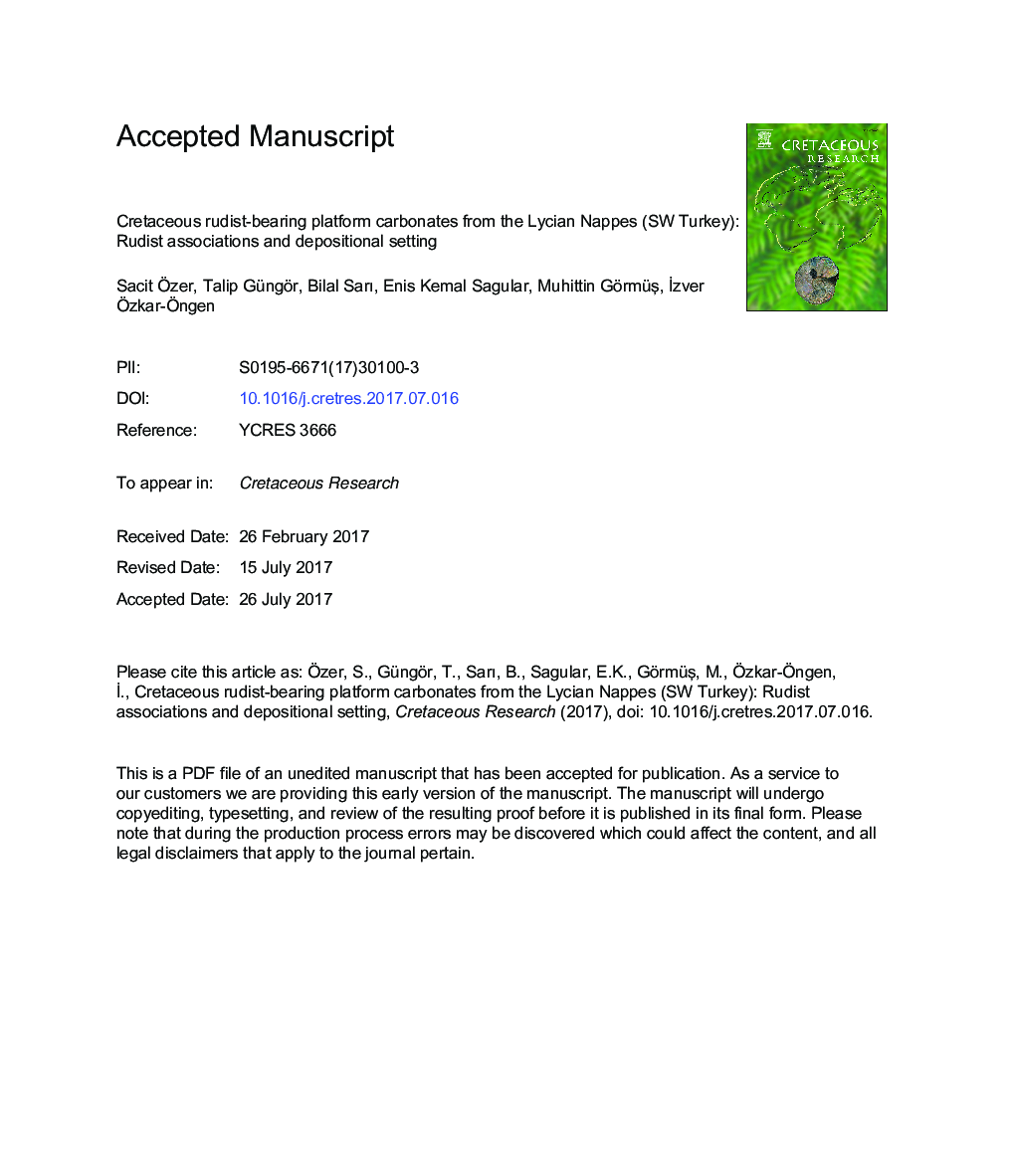| Article ID | Journal | Published Year | Pages | File Type |
|---|---|---|---|---|
| 5787989 | Cretaceous Research | 2017 | 77 Pages |
Abstract
Lycian Nappes (in SW Turkey) lie between the Menderes Massif and Bey DaÄları carbonates and comprise thrust sheets (nappes piles) of Paleozoic-Cenozoic rocks, ophiolitic and tectonic mélanges and serpentinized peridodites. This study focuses on identification of rudists and their palaeoenvironmental features observed within the Cretaceous low grade metamorphic successions (dominated by recrystallized limestones) from the Tavas and Bodrum nappes. The study is based on fifteen stratigraphic sections measured from Tavas, Fethiye, KöyceÄiz, Bodrum, Ãren and Bozburun areas. The Lower Cretaceous successions with rudists are very sparse in the Lycian Nappes and a unique locality including a Berriasian epidiceratid-requieniid assemblage is reported so far. A new requieniid-radiolitid assemblage was found within the pre-Turonian (?Albian-?Cenomanian) limestones. Four different Late Cretaceous rudist assemblages were firstly identified as well: 1) Caprinid-Ichthyosarcolitid assemblage (middle-late Cenomanian); 2) Distefanellid assemblage (late Turonian); 3) Hippuritid-Radiolitid assemblage (late Coniacian-Santonian-Campanian); 4) Radiolitid-Hippuritid assemblage ('middle'-late Maastrichtian). Microfacies data and field observations indicate that the rudists lived in the inner and outer shelves of the Cretaceous carbonate platform(s) in this critical part of the Neotethys Ocean. Rudists formed isolated patchy aggregations in very shallow palaeoenvironments and deposited as shell fragments particularly on the outer shelf environment, which is characterized by higher energy and platform slope characteristics.
Related Topics
Physical Sciences and Engineering
Earth and Planetary Sciences
Palaeontology
Authors
Sacit Ãzer, Talip Güngör, Bilal Sarı, Enis Kemal Sagular, Muhittin GörmüÅ, Ä°zver Ãzkar-Ãngen,
